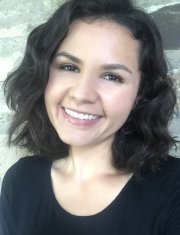
Gina Surita is a 2022-2023 Research Fellow and Ph.D. Candidate at Princeton University.
One commonly hears the statement “you are what you eat,” but what does this actually mean in scientific terms? Over the course of the twentieth century, physiologists and biochemists sought to determine how food is broken down and converted into a form of molecular energy that the cells of the body can utilize. My dissertation project examines the history of research into the nature of biological energy, focusing especially on the metaphors deployed by scientists working in this field. Ultimately, I argue that as researchers began to identify the molecule adenosine triphosphate (ATP) as the universal energy “currency” of the cell, they simultaneously constructed the biological cell as an “economy” in which the ATP “currency” circulated. My analysis of the usage of these kinds of economic metaphors in twentieth-century biochemistry broadens our understanding of the interrelations between the life sciences and economics.
My research fellowship with the Consortium enabled me to utilize material from three archival collections to which my access had been substantially delayed due to circumstances surrounding the pandemic. The sources I found in these collections will be very valuable as I think about how to revise and expand my dissertation project, which focused on the history of metabolism and bioenergetics research in twentieth-century physiology and biochemistry. Many documents I encountered also suggested potential lines of new research.
First, I visited the Alan Mason Chesney Medical Archives of Johns Hopkins University. There, I viewed material from the Albert L. Lehninger Papers. Around midcentury, Lehninger produced research that pointed to the cellular organelles termed mitochondria as the location from which the cell’s “energy currency,” or ATP, emanated. In the second half of the century, Lehninger became an important mitochondria investigator, writing many popular accounts of mitochondria, ATP, and associated biochemical processes. As a major figure in the postwar mitochondria field, Lehninger was included in an extended set of conversations (which took place through correspondence) among some of the top mitochondria researchers of the period. These investigators were discussing (and debating) the merits of researcher Peter D. Mitchell’s “chemiosmotic hypothesis” of how ATP is constructed within mitochondria (a process which went by “oxidative phosphorylation”) alongside rival theories. Correspondence that I found in the collection between Lehninger, Mitchell, Efraim Racker, David E. Green, etc. illuminates nuances in the theorizing of many of these key players. I hope to be able to incorporate this rich material into the chapter of my dissertation that dealt with competing explanations for oxidative phosphorylation and differing ideas on the best experimental means of investigating it. Portions of this correspondence could also be utilized in a separate project addressing the ways in which these actors negotiated the disciplinary status of bioenergetics within the larger landscape of late twentieth-century biochemistry.
Second, I visited the Center for the History of Medicine, Francis A. Countway Library of Medicine, Harvard University to work with the Cyrus H. Fiske Papers. Fiske has been documented as one of the first individuals to identify and isolate specific phosphate compounds from muscle tissues in the late 1920s. The first chapter of my dissertation examined how muscle (especially studies of contraction) became a key system for biochemists interested in studying biological energetics, and how phosphate compounds slowly became recognized as central players in energy transformations within this tissue. Because the chapter originally focused on pre-1930s muscle research in Germany and the UK, the Fiske material will add an important US dimension to the work I have already completed. In particular, several facets of the collection (correspondence, reprints kept, and notes on German muscle research) speak to Fiske’s engagement with the work of other muscle investigators of the era. Furthermore, numerous lectures on topics such as muscle physiology, biological phosphate compounds, and carbohydrate biochemistry/metabolism shed light on Fiske’s developing understanding of and unique approach to these key topics. The collection also contained much interesting material related to the technical side of laboratory work in biochemistry, such as various catalogues advertising different chemical reagents and assorted laboratory apparatus/stock materials. These resources could be very useful for layering onto my research an analysis of the material culture of a typical early twentieth-century biochemistry laboratory.
Third, I travelled to the Sterling Memorial Library at Yale University to view the Joseph S. Fruton Papers. As both a practicing biochemist who interacted on personal and professional levels with a number of the actors that I considered in my dissertation and later as a prolific historian of biochemistry, Fruton’s papers contained vast resources that could contribute to the enrichment of my project along various lines. First, Fruton’s correspondence with individuals that were important in my project such as Carl F. Cori and Hans Krebs have helped fill in some of the gaps in terms of the narrative I tried to construct. Second, Fruton’s papers contain texts of many lectures on enzymes, which offer snapshots into the state of knowledge in enzymology at different time points. This material could be integrated into a couple of chapters of my dissertation where the contours of enzymology in twentieth-century biochemistry received significant attention. Finally, the collection contained a cache of biochemical poetry and Christmas songs. As I have encountered amusing poetry/lyrics in other historical biochemical materials, I see this portion of the Fruton papers as a potential source base for a project on creative/artistic outputs among twentieth-century biochemists.
I am very grateful to the Consortium for supporting my project and for making it possible for me to access a great deal of rich archival material that will add new layers to my dissertation research and continue to inspire a plethora of new investigative directions.